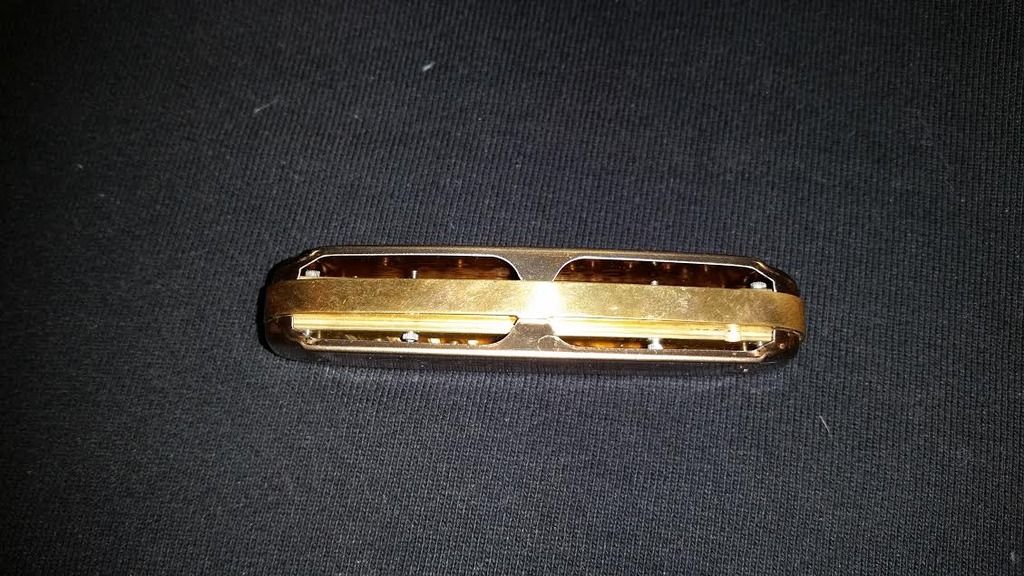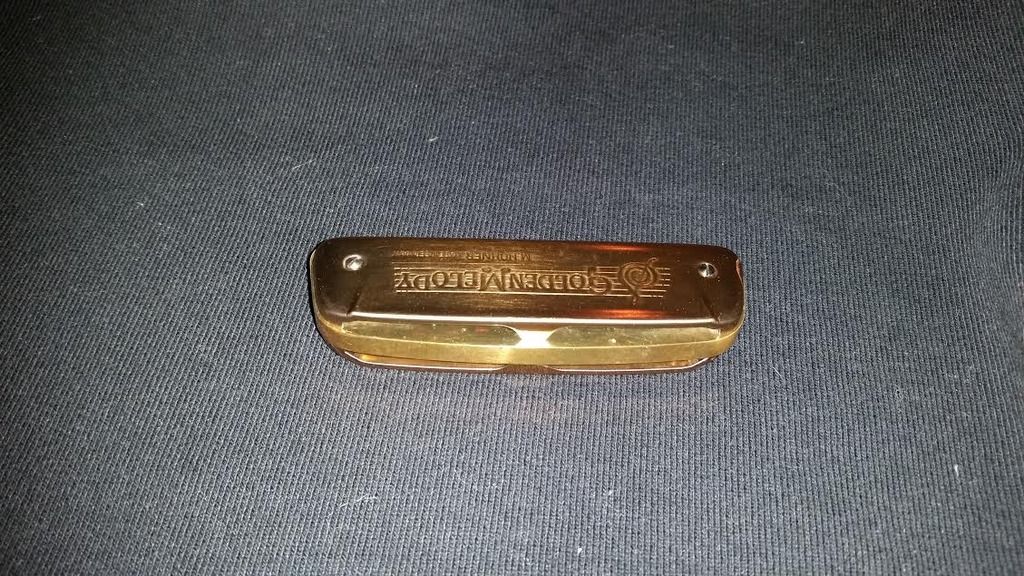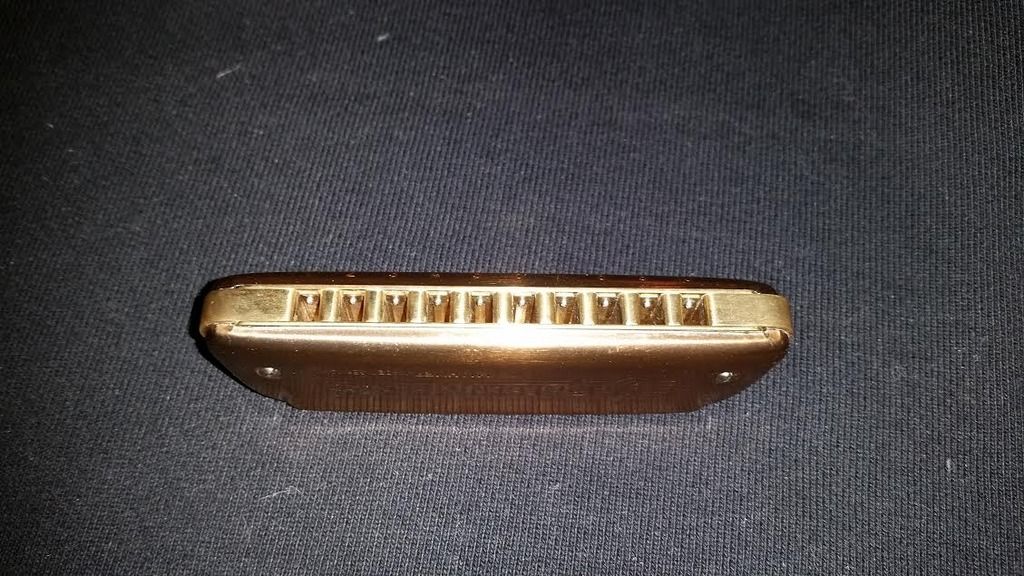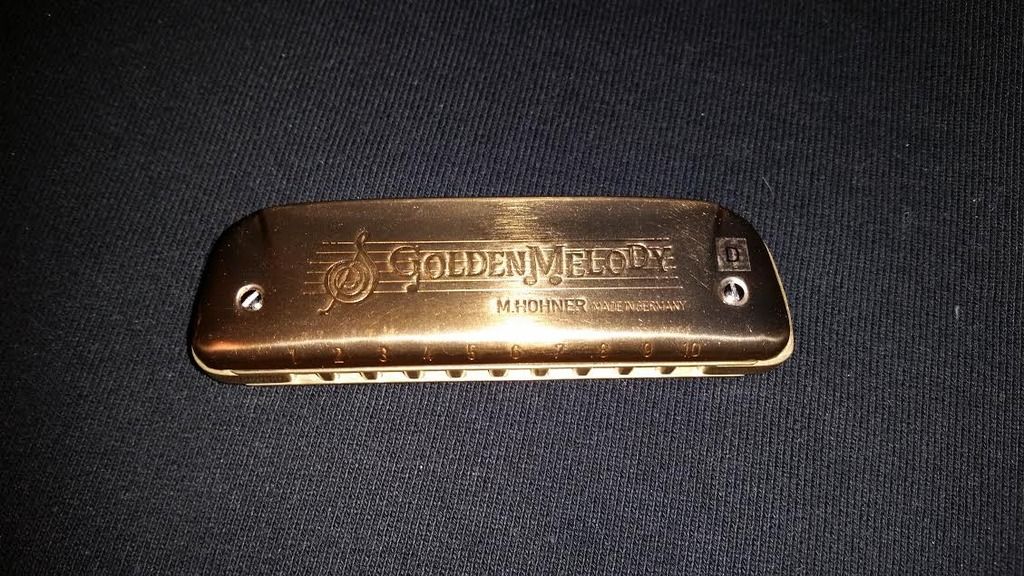ME.HarpDoc
175 posts
Aug 09, 2016
5:03 PM

|
Just saw the posting of J. D. Taylor demoing Blue Moon double reed plate harmonica. Awsome! Can those of you in the know enlighten me about the concept of a double reed plate? Why are they desirable?
|
nacoran
9183 posts
Aug 09, 2016
7:52 PM

|
I haven't played with one, but I think the concept is that it is more airtight. If you think about when a reed starts swinging the moment it passes through the plate it opens up a gap. By making the plate a little thicker it takes it longer to get through that gap, which makes a little breath go farther.
----------
Nate
Facebook
Thread Organizer (A list of all sorts of useful threads)
First Post- May 8, 2009
|
Thievin' Heathen
808 posts
Aug 10, 2016
4:55 AM

|
I tried to build one a couple of years ago. I found the slots did not really align so I was going to have to open up the slots on the secondary reed plates. If that kind of sounds like working on a Quadrajet, believe me it was. A mill would have come in real handy.
Others, far more knowledgeable, might come along to correct me, but I put it into the category of "solutions to problems that don't really exist".
I believe it gives you more volume and more leverage on the reed.
|
Halffast
50 posts
Aug 10, 2016
7:03 AM

|
Interesting ! Any one have any pictures ?
|
mlefree
733 posts
Aug 10, 2016
8:09 AM

|
I've never played one but from what I understand the double reed plates increase the "swing" of the reed, making for a louder harp.
But I can also see how, if the plates are carefully aligned and embosses a little on both sides of both plates, they would be super air-tight.
The bottom line, again from what I've heard, is that the resulting increased travel the reeds undergo causes them to fail sooner. That's why I haven't tried to make one. I believe that Joe Filisko, who probably invented the idea, no longer makes double reed harps, but please correct me if someone knows better. Also, I know Tom Halchak is making them but does anyone know of another tech who does?
I'd be most interested to learn about the longevity of any forum member's double reed plate harps as they gain more experience with them. Do they stay in tune?
Thanks,
Michelle
----------
SilverWing Leather - Custom leather creations for musicians and other eccentrics.
|
barbequebob
3272 posts
Aug 10, 2016
11:09 AM

|
I got a chance thru Winslow Yerxa many years ago to try out a MB using double thick reed plates that was done by Joe Filisko. I can tell you right off the bat that not only he properly aligned both plates together, plus the reed slots were embossed as well, and both gave the wider swing of the reeds resulting in a considerably louder instrument BUT the draw back to that is that you need TOP NOTCH breath control because if you don't have any real breath control (and truth be told, unfortunately the vast majority of non pro players just doesn't have ANY breath control at all and the most accurate description of the amount of breath force many of them use would fall under the category of balls to the walls), you could blow them out EASILY within two weeks or less than even that much and this is NOT an exaggeration at all.
Put it this way, your lips don't even need to touch the instrument to get even the e most minimal amount of air to make the reeds vibrate and the average player largely doesn't have a clue as to how hard they REALLY tend to play. Now I realize that this sounds like I'm dissing the average player, but no way in hell I am at all because what I'm telling you is the truth about it.
It's definitely true that Joe Filisko stopped making them for all of the above reasons that I just mentioned.
----------
Sincerely,
Barbeque Bob Maglinte
Boston, MA
http://www.barbequebob.com
CD available at http://www.cdbaby.com/cd/bbmaglinte
|
florida-trader
974 posts
Aug 10, 2016
6:23 PM

|
In answer to the OP’s question, the concept is that a thicker reed plate makes the reed slot chambers larger and thus they hold more air. Each time the reed swings through the slot it moves more air making the harp louder and more responsive. I have been making and offering Double Reed Plate harps for about a year and a half and the feedback is universally positive. I’m not sure who originated the concept but it is safe to say that Joe Filisko and others who made them did so by removing the reeds from a second set of reed plates and used the resulting reedless reed plates to build the double plate. To be sure, a common statement that surfaces whenever double reed plate harps are discussed is that it is easier to blow out reeds. It is a safe bet that many of the people who repeat that statement have only read it or heard it from someone else and have never actually owned a double reed plate harp much less blown out a reed on one. I’m not saying there is no truth to the notion but I really don’t think it is as widespread as people think.
I don’t want to turn this into a commercial but since my name and products have been specifically mentioned I feel a bit compelled to make some clarifications. Whereas my pioneer brethren in the harmonica tech world used actual reed plates to build their double reed plate harps I have a separate component manufactured. It is about half the thickness of the reed plate - 0.40mm vs. 0.95mm - so the resulting plate is a “double reed plate” but not double the thickness. It seems that the thinner component offers the enhanced performance of a truly double thick reed plate but with less incidence of reed failure. In fact, in the past year and half I don’t think anyone has had an issue with blown out reeds. It simply is not an issue and if it was, I would gladly repair the harp at no cost – within reason, meaning that if a customer kept blowing out the same reed on the same harp, sooner or later I would have to charge something. But that just has not been the case. Very little of what I make come from original ideas. I was not the first to make Corian aftermarket combs or Aluminum combs or to laser cut combs (those days are long gone). Neither am I the first to make double reed plate harps. These ideas have been floating around the harp world for decades. About all I have done is figure out a way to make it a commercially viable enterprise. A little working capital and some good technology goes a long way.
----------
Tom Halchak
www.BlueMoonHarmonicas.com

|
Garlic Breath
57 posts
Aug 10, 2016
8:36 PM

|




Here's some pics of the double reed plate Golden Melody Tom Made for me. Key of "D". It is so responsive that it has helped me play more accurately and expressively with less breath. I think a lot of the tendency to play so hard develops due to using leaky unimproved out of the box harps.
|